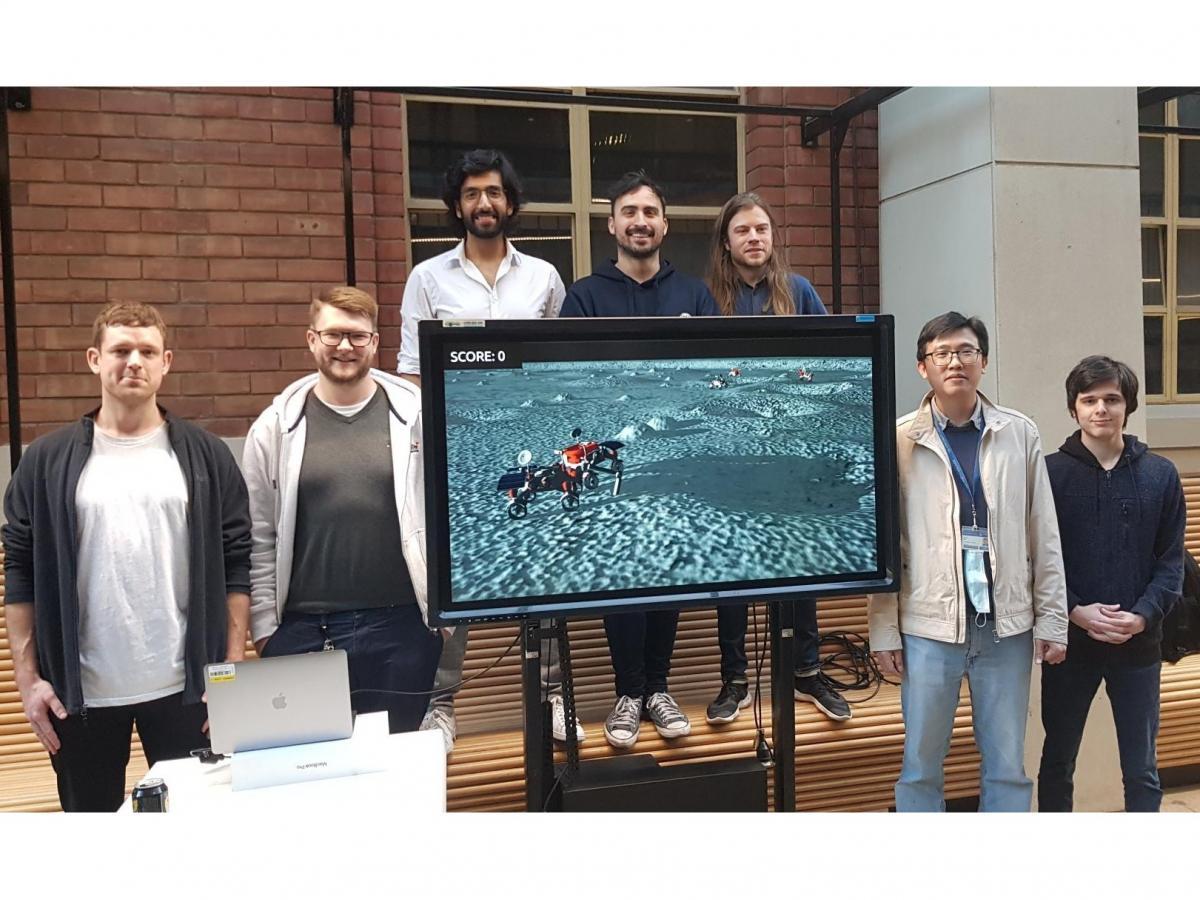Students honoured in NASA Robotics Challenge

Team University of Adelaide
This article was originally published on the University of Adelaide Newsroom website.
A team of undergraduate and honours students from the University of Adelaide has been awarded third prize and US$75,000 in the NASA Space Robotics Challenge, as well as an Innovation Award for its work on critical challenges in the competition.
“Our team, Team University of Adelaide, which was the only one from Australia to participate in the NASA Space Robotics Challenge, competed against teams from the world’s top universities, as well as corporate and private groups,” said University of Adelaide’s Associate Professor John Culton who is Director of the Andy Thomas Centre for Space Resources.
“The participants were challenged to design code to control a fleet of different lunar robots that had to locate, excavate, load, and transport water ice, and other volatile substances, to a lunar landing craft.”
The Space Robotics Challenge is a virtual competition which aims to advance robotic software and autonomous capabilities for space exploration missions on the surface of extraterrestrial objects, such as distant planets or moons. The challenge was undertaken in a NASA simulation of the lunar south polar region.
"By participating in the NASA Space Robotics Challenge the students have engaged in the next phase of human space exploration."Professor Anton Middelberg, Deputy Vice-Chancellor (Research)
A 40-person team comprising both students and staff from the University’s Faculty of Engineering, Computer and Mathematical Sciences, competed in the qualifying round throughout 2020 alongside 113 other teams. Only 22 teams were selected to compete for the first prize. The University’s core team comprised primarily masters, PhD, and honours students from a variety of countries and cultures.

Some of Team University of Adelaide's leaders (from left to right): Alec Arthur, James Bockman, Ragav Sachdeva, Ravi Hammond, Dustin Craggs, Professor Tat-Jun Chin and Brandon Smart.
Team University of Adelaide was also awarded one of only two NASA “Innovation Awards”.
“The NASA engineers recognised the team’s particularly novel solution to critical challenges currently confronting NASA as they prepare for lunar surface operations in the next several years,” said Professor Culton.
“The code that the team developed could be used in NASA’s Artemis human spaceflight program, which aims to send people to the Moon by 2024, to make its surface rover fleet more autonomous.
“While NASA hopes to use the cutting-edge capabilities of this code on the Moon and Mars, the code could also be used on Earth for autonomous mining operations, disaster response and recovery, robotic agriculture, construction, and other applications.”
Professor Anton Middelberg, Deputy Vice-Chancellor (Research), University of Adelaide congratulated the team.
“University of Adelaide students are encouraged to excel in their studies and this great result shows that they have a bright future ahead of them as leaders in their chosen field,” he said.
“By participating in the NASA Space Robotics Challenge the students have engaged in the next phase of human space exploration.”
The University’s participation in the NASA Robotics Challenge was organised as part of the University’s Andy Thomas Centre for Space Resources.
